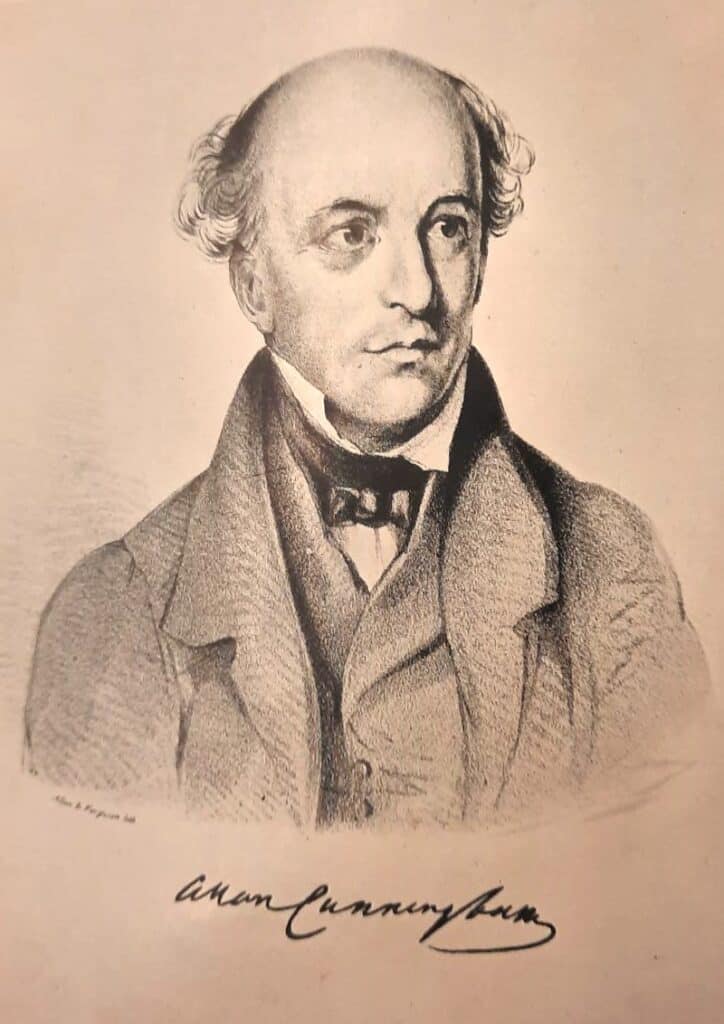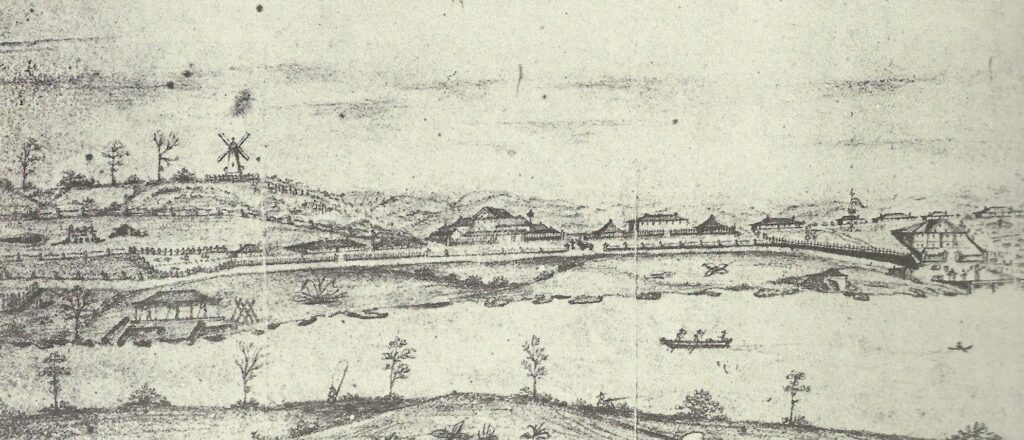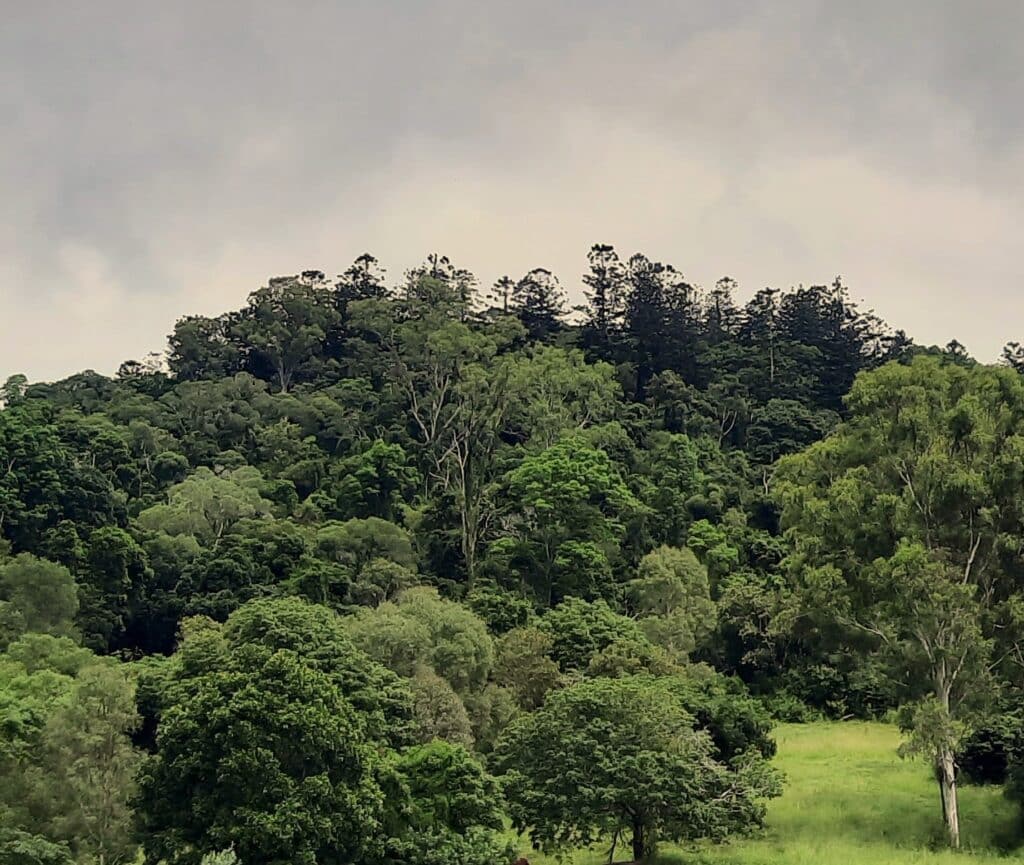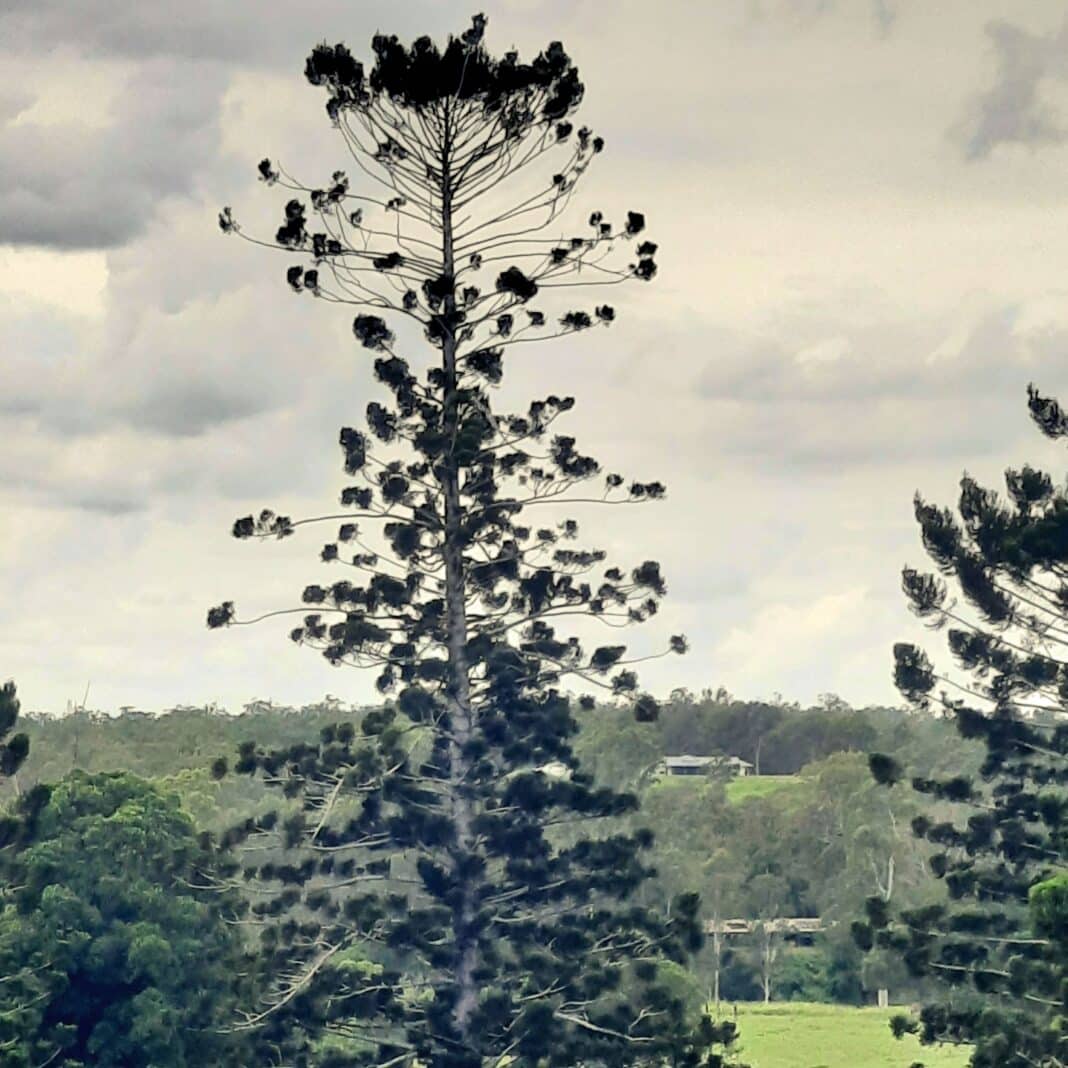It is rare to have a definitive historical date and place for discovering a natural renewable resource that founded an Industry that prospers to the present day. That noteworthy date is Tuesday, September 21, 1824, and we have a precise record of that discovery on the banks of the Brisbane River.
The King’s botanist Allan Cunningham, accompanied by the Surveyor-General of the NSW Colony John Oxley, had left their stranded boat on the drought-affected river and took off on foot heading for a mountain vista clothed with stately trees.
They had to cross the river three times to reach their destination. Both men of reserved character could barely contain their enthusiasm for the splendid sylvan view at hand.

Here are the botanist’s words from his journal (held at NSW State Archives): “Hitherto in our examination of this river, we have been only gratified with a distant view of the pine; immediately we approached one of magnificent stature, the Monarch of these woods. It was a healthy well-grown tree exceeding 120 ft in height with a trunk 3’6″ diam. It was totally impossible not to halt a few moments to admire this noble tree.”
Here are the surveyor’s words from his diary (held at John Oxley, Queensland State Library): “We penetrated through a very thick brush abounding with stately and magnificent pines, which towered far above the other timber of the hill. Mr C(unningham) procured a couple of young cones, which satisfactorily demonstrated that the tree which had excited so much admiration was an entirely new species of the genus Auricaris (Araucaria) being the first discovered in New South Wales, and decidedly the growth of the interior and not a coast tree.”
“We measured one, the first we came to, the circumference of which was 10 feet. Many others were of greater magnitude, which was carried up perfectly straight without a branch to a height of from 50 to 100 feet, the whole height in the full-grown trees being at least 150 feet. To this stately tree Mr C gave the name of the Brisbane pine.”
Their effusive discovery words travel the timeline and elate us today.
Foliage and cone samples were collected in situ and eventually reached Kew Gardens in London, where the taxonomists named the Moreton Bay Pine, now known as Hoop Pine, Araucaria cunninghamii, after the botanist who determined this was a new tree to science.

Sketch… Brisbane Town 1831 from the south side. Note under the tower mill the pit sawyers with six stacked air-drying boards and three hoop pine logs on the bank.
The Brisbane River exploration was part of investigations undertaken to establish the first penal settlement at Redcliff Point in September 1824. When the brig Amity (a two-masted square-rigged ship) left for the return trip, it had pine logs on deck for assessment in Port Jackson.
From then, hoop pine became a most desirable and valuable construction, furniture and naval timber. Indeed, the relocation of the fledging settlement to the present-day Brisbane location in May 1825 was aligned to “facilitate the loading of timber that may be procured in the Brisbane River”. By 1830, 26 sawyers were cutting in the district, and by 1835, “no ship spars within 20 miles of the anchorage” existed.
Hoop pine became the foundation of the Queensland forest products Industry for the next 100-plus years and, as a consequence of overexploitation, the foundation of the Queensland Forestry Plantation enterprise. Today, there are 47,000 hectares of planted hoop pine in Queensland’s state forests.

Postscript: Using the recorded traverses of the two principal explorers, Gary has designated the location of discovery and sampling near Pine Mountain and, with Dr Paul Forster of the Queensland Herbarium, selected a veteran specimen hoop pine for entry into the Herbarium records. The Ipswich Mayor will present a plaque to mark the site as one of historical interest.






